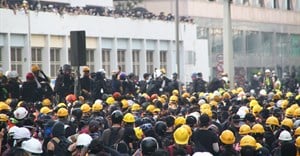Determining distance in restraint of trade agreements

Summary
If an employee's restraint of trade agreement uses the term "radius" as the method of measurement for the geographical scope of the restraint, the ordinary meaning of "radius" must be applied as opposed to measuring the distance by using the actual distance travelled by road from the previous place of employment to the new place of employment.
Facts
In the case of Trendy Greenies (Pty) Ltd t/a Sorbet George v De Bruyn and others [2020], the Labour Court (LC) had to deal with the above issue. The facts of the matter are briefly set out below.
Hestelle De Bruyn and Michelle Anthony were employed by a Sorbet franchise, Trendy Greenies (Trendy), on 28 June 2018 and 1 September 2018 respectively. They both underwent extensive training, paid for by Trendy, on the application of various cosmetic products. It was common cause that the training provided was a factor which made Sorbet unique in comparison to its competitors. De Bruyn and Anthony were graded Level I therapists. In De Bruyn and Anthony's employment agreement, the following restraint was included –
- 6.1 bars them from soliciting former clients, canvassing business or engaging in competitive activity which is the same or similar to that of Trendy; and6.2 prohibits them from taking [up] employment with anyone else engaged in similar competitive activities.
The restraint was applicable for one year from the date of termination employment.
The geographic scope of the restraint was
any area which falls within a 10 (ten) kilometre radius measured from any location at which you rendered services at during the prescribed period.
De Bruyn and Anthony tendered their resignations to Trendy and began working for You're Worthy (Worthy), a competitor of Trendy. A letter of demand was sent to both of them which alleged that they were in breach of the restraint by being employed by Worthy and that an interdict would be sought against them if they remained in the employment of Worthy.
Worthy responded to the letter stating that De Bruyn and Anthony had not yet signed any contracts, however, confirmed that Anthony would be working at Worthy from October 2020. De Bruyn and Anthony also indicated that they viewed the restraint as unfair and unreasonable and indicated their intention to oppose any attempt to enforce it. Trendy then made a further demand to De Bruyn and Anthony to abide by the restraint and followed up on two occasions with their attorneys. Trendy received no response.
Trendy approached the LC on an urgent basis to enforce the restraint of trade against De Bruyn and Anthony.
LC's evaluation
The only factual dispute in determining whether the restraint was breached was whether Worthy's premises fell within the geographical scope of the restraint. Worthy's premises is 9.91km from Trendy's premises, measured along a straight line from Trendy's premises to Worthy's premises (i.e. 'as the crow flies'). Trendy supported this contention by providing a Google maps measurement which indicated the distance on a straight line between the premises. Worthy argued that the distance between the premises was actually 13.1km. Worthy provided no evidence for this contention which was apparently based on the distance by road between the premises. This contention was not included in Worthy's answering affidavit and no indication was made as to which route between the premises was used.
The LC considered the ordinary meaning of "radius" which is "a circular area of which the extent is measured by the length of the radius of the circle which bounds it". The LC found that the distance between the premises by road would be more than 9.91km, unless there was a road which followed a direct line between the premises. There was no evidence that the shortest route was more than 10km.
The LC considered case law in which it was held that the actual distance that had to be travelled was the correct method to measure the distance. The LC distinguished this matter from the case law considered and held that the most practical approach in determining the geographical scope of a restraint when "radius" is used is to use the ordinary meaning of an area defined by a radius from a specific point. The LC held further that this was the intention of the parties when the term "radius" was used.
De Bruyn and Anthony also argued that the geographical scope was vague because of the reference to "any location at which you rendered services during the prescribed period". They argued that the training sessions that were provided at different locations was part of the services rendered. The LC held that it was clear that the services intended to be protected were the services rendered to clients, therefore the training was not considered part of the services rendered and there was no evidence that they worked at any other premises.
De Bruyn and Anthony further argued that the restraint was unreasonable. However, the LC dismissed this argument because there was no evidence provided and without evidence a court cannot mero motu assess whether the restraint strikes the appropriate balance between an employer's right to enforce a restraint and the employee's freedom to choose their occupation.
The LC held that De Bruyn and Anthony were in breach of their restraint of trade agreements because Worthy's premises fell within the 10km radius and the interdict was granted.
Importance of the case
When a restraint of trade agreement uses "radius" as a measurement for the geographical scope of the restraint, the ordinary meaning of "radius" must be applied as opposed to the actual distance which would be travelled by road. The ordinary meaning of "radius" requires the geographical scope to be determined by the distance between the premises in a straight line.














